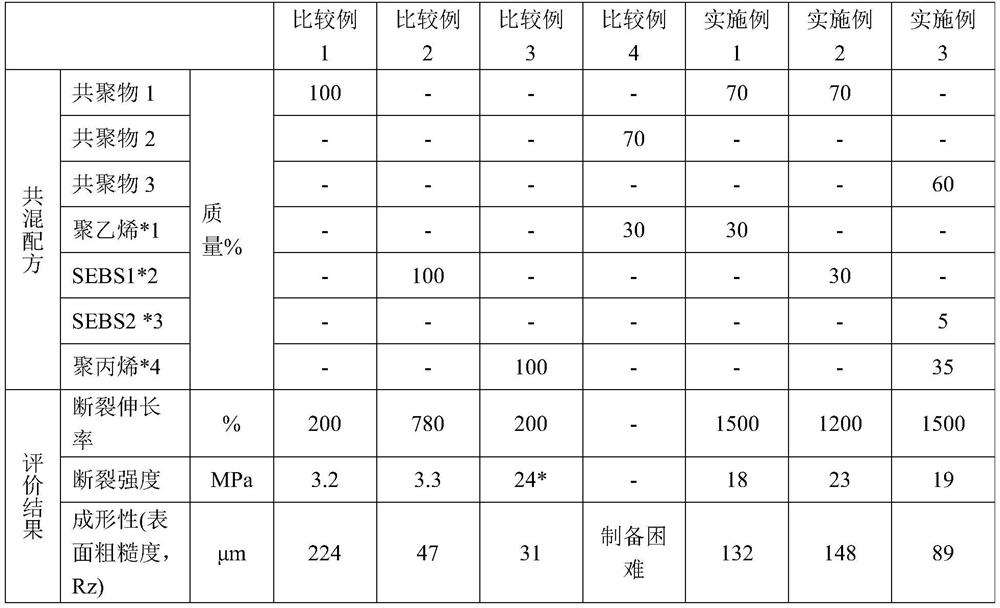Resin composition and resin product
A technology of resin composition and thermoplastic resin, which is applied in the direction of manufacturing tools, additive manufacturing, additive processing, etc., can solve the problems of not studying multi-component copolymers, and achieve the effect of excellent fracture characteristics
- Summary
- Abstract
- Description
- Claims
- Application Information
AI Technical Summary
Problems solved by technology
Method used
Image
Examples
Embodiment 1~3 and comparative example 1~3
[0141] According to the blending formula shown in the following Table 2, each copolymer synthesized as above, commercially available thermoplastic resin (B) and / or or commercially available thermoplastic elastomer (C) to prepare filament samples for FDM 3D printers.
[0142] Mixing and kneading were performed under the conditions of mixing and kneading temperature: 170° C., number of revolutions of the screw: 100 rpm, and mixing and kneading time: 3 minutes. These conditions were set such that the torque during the mixing and kneading process did not exceed a maximum value of 8000N.
[0143] Further, when the filament sample was extruded after mixing and kneading, it was carried out by using a nozzle (diameter: 1.25mm) and reducing the number of revolutions of the screw to 10rpm so that the filament sample had a diameter in the range of 1.7mm to 1.8mm extrude.
[0144] The filament sample thus extruded was then wound at a winding speed of 10 mm / sec by using a fiber winder (a...
PUM
| Property | Measurement | Unit |
|---|---|---|
| melting point | aaaaa | aaaaa |
| breaking strength | aaaaa | aaaaa |
Abstract
Description
Claims
Application Information
 Login to View More
Login to View More - Generate Ideas
- Intellectual Property
- Life Sciences
- Materials
- Tech Scout
- Unparalleled Data Quality
- Higher Quality Content
- 60% Fewer Hallucinations
Browse by: Latest US Patents, China's latest patents, Technical Efficacy Thesaurus, Application Domain, Technology Topic, Popular Technical Reports.
© 2025 PatSnap. All rights reserved.Legal|Privacy policy|Modern Slavery Act Transparency Statement|Sitemap|About US| Contact US: help@patsnap.com


